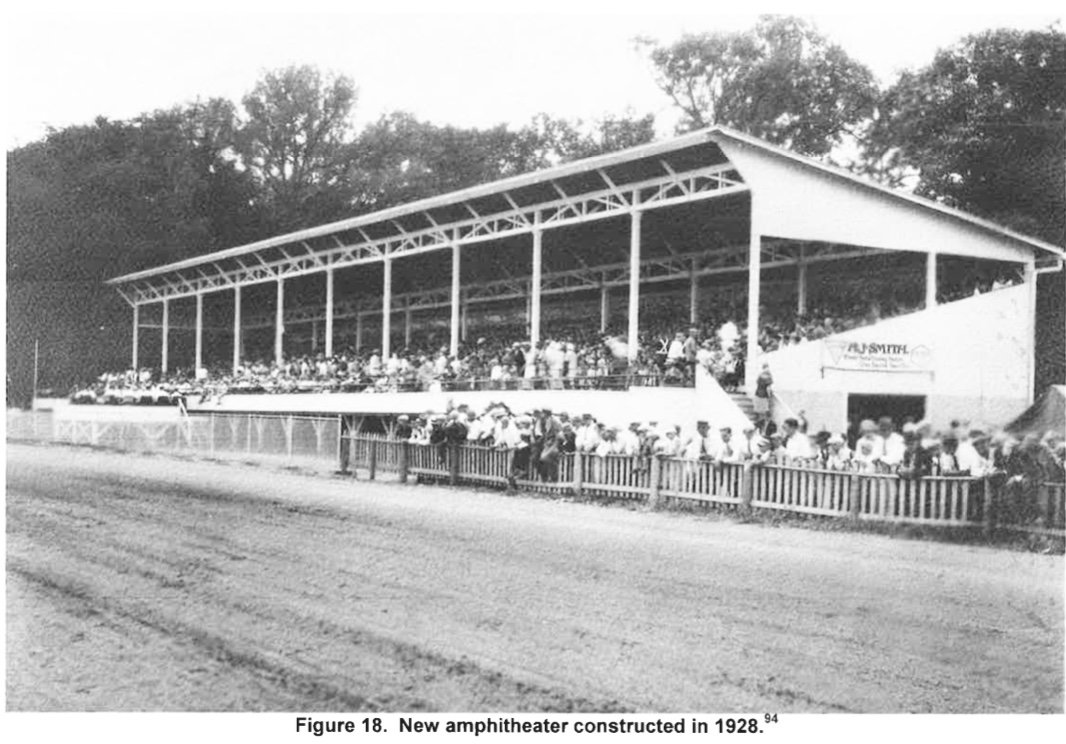'West Liberty Fair' had humble start in 1852
Annual event moved to West Liberty grounds in 1871
As we are all anxiously looking ahead to July and the return of the Muscatine County Fair, I became curious about how it all started, so many decades ago.
In the fall of 1852, a group of adults and their children met at the farmhouse of Samuel Mather Sr. in Iowa Township of Cedar County.
Outside, there were assorted horses and mules, many of which had been driven in from the prairie in a semi-wild state. The animals were tethered to whatever would hold them.
There also were a few cattle of ‘questionable’ breeding, in addition to several flocks of sheep.
Inside, the women were comparing their handiwork of homemade quilts and blankets, and collections of yarn and thread.
The women had also brought along jams and jellies. These were made from the fruit of trees along the Cedar River (mostly crabapple, wild plum and wild grape).
This small conclave was the first ever fair in Iowa!
These yearly small gatherings continued and grew so much that on April 25, 1859 a meeting was held at the District #2 schoolhouse in Springdale township, just north of West Liberty. There, the attendees decided their event would be known as the Cedar County Agriculture Society.
Moses Varney was elected president and Lawrie Tatum was elected secretary. A constitution was drawn up.
At a follow-up meeting of the board in July of the same year, October 6 and 7 were selected as the fair dates.
The fair was held at Moses Butler’s farm, halfway between Springdale and West Branch. Butler also offered the use of his barn and lots.
The weather for the fair, it’s reported, ‘was fine, and the attendance good.’
This gave the board ‘great satisfaction and encouragement’ according to documentation.
A report submitted to the State Agriculture Society indicated there were 188 entries, including wheat, corn, oats, Irish and sweet potatoes. These items were listed as the principal crops at the time.
This was an excellent showing, considering only a small barn served in the place of the current day ag hall, fine arts pavilions etc.
It’s said at that time wheat averaged about 12 bushels to the acre and molasses was very important then. One year, over 6,900 gallons of sorghum molasses was made in 20 mills in the township. That amounted to approximately 40 gallons per family.
In the next few years, the fair was held in the pasture field across the road from the Butler farm. A tent would be set up to display fine arts and exhibits.
By 1862, however, there were some problems. The fair was not a financial success, as it was war time, and Muscatine County had sent more men to battle than any other county in Iowa. Adverse weather that year also came into play.
More importantly, an issue had developed with the county recorder’s office. It was determined that the Tipton fair group was using the same name as the Springdale group. After weeks of lengthy discussion back and forth, the Springdale group went off on their own under a new name, Union District Agriculture Society (UDAS).
New officers were elected, a new constitution made, and property was transferred.
The first fair under the new name was held on Sept. 28 and 29, 1863. The fair was relocated to ‘near the bridge of the middle branch of the Wapsie on the road from West Liberty to Springdale, 1/6 mile north of the Muscatine county line.’ This was Delbert Smith’s property at the time.
In 1864, the UDAS purchased these 40 acres along the Wapsie for $400. Now the fair had a permanent home. Work started on improvements and stock pens were built.
Enthusiasm and interest for the fair continued to grow, and in 1865, buildings started going up, and also a race track was created. A high board fence was installed along the road and at the rear side of the grounds. The fair increased its run to three days of events that year.
The fair was held on those grounds every year until 1871. In December of that year, the UDAS was transplanted one last time!
It accepted an offer from W.C. Evans for a 10-year lease of land in West Liberty, for fair purposes. The Society initially paid $50 annually for the use of the land for four weeks of the year.
The previous site along the Wapsie River was sold to L.W. Henderson.
The West Liberty grounds (the current site) were located south of town and surrounded by a beautiful grove of trees that provided shade to fair patrons. As the railroad was nearby, fair goers from afar were frequently offered special discount rates. They’d stay at the Hise House (which later became the Moylan Hotel). The hotel did a brisk business, and free carriage rides to the fairgrounds were available.
Once again, improvements began, and another race track built. It’s interesting to note that back when the fair was held at the Butler farm, the only track was the big road. Another prominent West Liberty citizen, Amos Kimberly, had a 1,000 acre farm north of town about 320th Street, and he did a good deal of horse breeding about this time. Horse racing was big back then. His spouse was Mary Kimberly, for whom the local park and pool in West Liberty are named.
Fast forward to 1960, when the articles of incorporation for the UDAS were due for renewal. Instead, the board elected to re-incorporate, making the annual event The West Liberty Fair, Muscatine County. One of the first items of business was to make the track safe for automobiles. That was done, and “jalopy races” started that year.
The Muscatine County Fair will be held Wednesday through Sunday, July 21-25, this year, kicking off as always with the traditional fair parade on Sunday, July 18, through West Liberty, starting at the fairgrounds.
After 158 years and a humble start 11 years earlier in 1852, the Muscatine County Fair is a classic example of rural Iowa traditions that carry a lot of pride and passion for rural life, honoring agriculture, competition and, most of all, community fellowship.
Phyllis Owen Sterba is a graduate of West Liberty High School and a long-time resident of the area who writes history features and stories for the Index. Anyone having more information or old photos are welcome to contact the Index at indexnews@Lcom.net or by contacting Sterba or editor Tim Evans.
Comments

